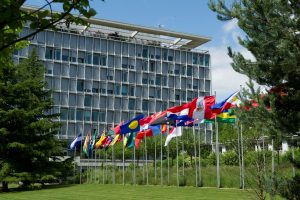Shutting the proverbial ‘door’ on polioviruses
Polio is about to become the second-ever human disease to be eradicated – efforts are underway to ensure it will stay eradicated

Smallpox is so far the only human infectious disease to have been eradicated from the world. With eradication, smallpox virus was consolidated into a limited number of biomedical facilities. In 1978, an accident in a biomedical research laboratory in Birmingham, United Kingdom, resulted in the inadvertent release of smallpox virus, two persons developing disease, and one of them dying of the disease despite having been vaccinated as a child. This triggered countries to further reduce the number of facilities retaining smallpox virus to the two official repositories of today.
The world is on the brink of another eradication: that of polio – the second human disease to be eradicated in history.
Polio can be caused by infection with any one of three different types of poliovirus. One of these types, wild poliovirus type 2, has officially been declared eradicated by an independent commission in September of this year. While wild poliovirus type 2 has been eradicated and is no longer circulating in the human population, it continues to exist in a number of laboratories and vaccine manufacturing facilities around the world.
Why retain virus?
Retaining polioviruses in certain settings is critical. For one, the virus is needed to make vaccines that will continue to be given to children as part of immunization programmes in countries worldwide. And as importantly, poliovirus is critical for medical research, for example, showing encouraging potential for developing treatment against cancer. This and other crucial research work will need to continue under safe and secure conditions.
Safely retaining virus
Facilities retaining polioviruses must thus ensure that these viruses are not released back into the community or the environment, to again cause paralysis or death.
This involves identifying which facilities hold polioviruses, knowingly or unknowingly. Only those facilities where poliovirus is needed to serve critical national and international functions, such as vaccine production and indispensable research, should be allowed to hold polioviruses. These laboratories and facilities should be named by their hosting countries as poliovirus-essential facilities (PEFs), if they demonstrate to take appropriate measures to handle and store poliovirus safely and securely in a defined space – this is called containment. All other polioviruses that are not needed for these critical functions should be properly destroyed.
It is urgent to ensure the appropriate containment of the eradicated poliovirus type 2. The ultimate goal, however, is to contain all polioviruses in poliovirus-essential facilities as soon as the other two poliovirus types (1 and 3) are also declared eradicated.
Call to action
All countries are being called to action. They should implement the measures that are outlined in the WHO global action plan for containing polioviruses. The ministries of health of all 194 WHO Member States endorsed this plan in May 2015 and committed to its implementation, which can only be completed through the full engagement of each and every stakeholder.
Now that poliovirus type 2 has been certified as eradicated, this virus type will only exist in laboratories and facilities that are designated and meet the certified level of containment. These laboratories and facilities, and their hosting countries, hold the critical responsibility of making sure that no poliovirus type 2 is ever released into communities. This is the only way to truly ensure that no child will ever again, for all future generations to come, become paralysed by or die from this terrible disease.
New expert groups
To support this work, WHO is establishing two new groups: the Containment Working Group (CWG) and the Containment Advisory Group (CAG).
The CWG, under the Global Commission for the Certification of Poliomyelitis Eradication (GCC), will review the national containment certification of poliovirus-essential facilities (PEFs) and make recommendations to the GCC.
The CAG will make recommendations on technical issues associated with GAPIII.
The call for nominations for the CWG is now open. Applications for CAG membership will open shortly.












